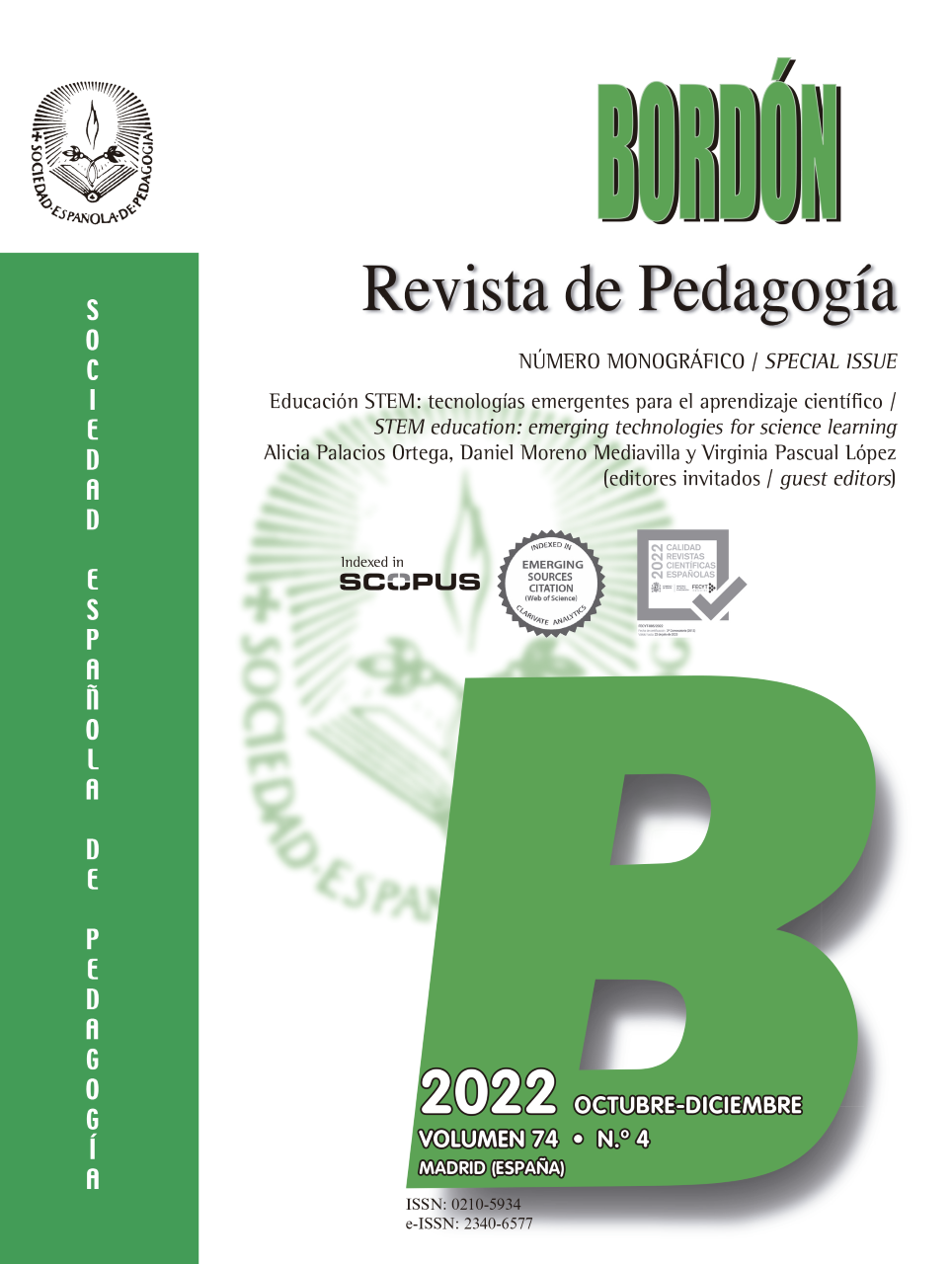The role of new technologies in STEM education
Main Article Content
Abstract
INTRODUCTION. The growing interest around STEM teachings is the result of the urgent need for professionals in the scientific-technological added to the need to promote scientific literacy among citizens. This way, the society will be able to face the great current socio-scientific problems. The active contribution of emerging technologies as facilitators of the teaching-learning process are presented as a key tool to promote STEM vocations, develop scientific work skills and improve the interpretation of processes and concepts. METHOD. This paper introduces a compilation of theoretical and applied research to the scientific community, that sheds light to the important role of new technologies in STEM Education, and also the needs of future research. RESULTS. The included research papers show that scientific production in this field has experienced an exponential growth in recent years, with an exponential growth in the application of virtual reality in STEM areas. Virtual simulations pose different challenges for their effective implementation, either if they are developed through virtual reality or as an interactive virtual environment. On the one hand, it is crucial to determine the validity of applets as facilitators of scientific learning; on the other hand, it is also important to know the teacher’s competences in the use of these technologies for STEM education. Finally, clear evidence is shown about how simulations and virtual laboratories improve scientifictechnological teaching as well as the construction of mental models. DISCUSSION. These results allow us to focus on deepening in the development of new technologies, as well as in the complex task of selecting the most suitable simulators, and in the training needs for teachers.
Downloads
Article Details

This work is licensed under a Creative Commons Attribution-NonCommercial 4.0 International License.
References
Alabdulhadi, A. y Faisal, M. (2020). Systematic literature review of STEM self-study related ITSs. Education and Information Technologies, 26, 1549-1588. https://doi.org/10.1007/s10639-020-10315-z
Brinson, J. R. (2017). A further characterization of empirical research related to learning outcome achievement in remote and virtual science labs. Journal of Science Education and Technology, 26, 546-560. https://doi.org/10.1007/s10956-017-9699-8
Bybee, R. (2011). Scientific and engineering practices in K-12 classrooms: understanding “A framework for K-12 science education”. Science Teacher, 78(1), 34-40.
D’Angelo, C., Rutstein, D., Harris, C., Bernard, R., Borokhovski, E. y Haertel, G. (2014). Simulations for STEM learning: systematic review and meta-analysis. SRI International.
De Jong, T. y Van Joolingen, W. R. (1998). Scientific discovery learning with computer simulations of conceptual domains. Review of Educational Research, 68(2), 179-201. https://doi.org/10.2307/1170753
European Commission (2019). 2nd survey of schools: ICT in education. Benchmarking access, use and attitudes to technology in Europe’s schools.
Freeman, A., Adams, S., Cummins, M., Davis, A. y Hall, C. (2017). NMC/CoSN Horizon Report: 2017 K-12 Edition. The New Media Consortium.
Hallinger, P. y Wang, R. (2020). The evolution of simulation-based learning across the disciplines, 1965-2018: a science map of the literature. Simulation & Gaming, 51(1), 9-32. https://doi.org/10.1177/1046878119888246
Leonard, J., Buss, A., Gamboa, R., Mitchell, M., Fashola, O., Hubert, T. y Almughyirah, S. (2016). Using robotics and game design to enhance children’s self-efficacy, STEM attitudes, and computational thinking skills. Journal of Science Education and Technology, 25, 860-876. https://doi.org/10.1007/s10956-016-9628-2
López, V., Couso, D. y Simarro, C. (2020) Educación STEM en y para un mundo digital: el papel de las herramientas digitales en el desempeño de prácticas científicas, ingenieriles y matemáticas. Revista de Educación a Distancia, 62(20), 20-29. http://dx.doi.org/10.6018/red.410011
Napal, M. y Zudaire, M. I. (2019). STEM. La enseñanza de las ciencias en la actualidad. Dextra.
OECD (2016). PISA 2015 Assessment and Analytical Framework. OECD. https://www.oecd.org/education/pisa-2015-assessment-and-analytical-framework-9789264281820-en.htm
OECD (2019). PISA 2018 Assessment and Analytical Framework. OECD. https://read.oecd-ilibrary.org/education/pisa-2018-assessment-and-analytical-framework_b25efab8-en#page1
Oliveira, A., Behnagh, R., Ni, L., Mohsinah, A. A., Burgess, K. J. y Guo, L. (2019). Emerging technologies as pedagogical tools for teaching and learning science: a literature review. Human Behavior & Emerging Technologies, 1, 149-160. https://doi.org/10.1002/hbe2.141
Osborne, J. (2014). Teaching scientific practices: meeting the challenge of change. Journal of Science Teacher Education, 177-196. http://doi.org/10.1007/s10972-014-9384-1
Sosa-Díaz, M. J. y Valverde-Berrocoso, J. (2020). Perfiles docentes en el contexto de la transformación digital de la escuela. Bordón, Revista de Pedagogía, 72(1), 151-173. https://doi.org/10.13042/Bordon.2020.72965
Vasquez, J. A., Sneider, C. y Comer, M. (2013). STEM lesson essentials, grades 3-8: integrating science, technology, engineering, and mathematics. Heinemann.
Velasco, J. y Buteler, L. (2017). Simulaciones computacionales en la enseñanza de la física: una revisión crítica de los últimos años. Enseñanza de las Ciencias, 35(2), 161-178. https://doi.org/10.5565/rev/ensciencias.2117
Zhang, W. y Wang, Z. (2021). Teoría y práctica de VR/AR en educación científica K-12: una revisión sistemática. Sustentabilidad, 13, 12646. https://doi.org/10.3390/su132212646

